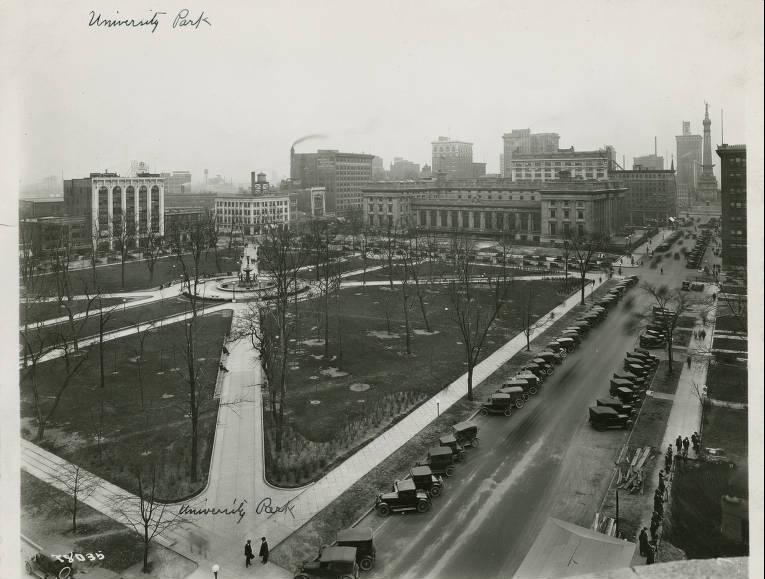Bounded by New York, Vermont, Pennsylvania, and Meridian streets, University Park is a site that has been reserved for public use since 1827.

Originally intended to be the site of a university, only a small seminary existed on the site from 1833-1853. Its lecture hall served as Henry Ward Beecher’s first pulpit. The seminary was also the location of Indianapolis’ first high school. That structure was razed in 1860, replaced by a ball field and pasture, and subsequently used a temporary military drill ground, early in the Civil War.
Afterward, the site languished. In 1876 as part of a national movement for the creation of urban parks, the square was laid out as a Victorian park that featured radiating curvilinear walks, benches, small fountains, and a central bandstand. The square was redesigned in 1914 by George Kessler in the renaissance-revival style typical of the City Beautiful era. The Square is the southern terminus of a five-block-long civic center mall connecting the , Mall, the , and the Federal Courthouse (See ).
The plan geometry of University Park is bilaterally symmetrical with a double walk serving as the north-south axis connecting the Beaux Arts Court House and the Indiana War Memorial. Radiating diagonal walks connect at the Park’s central feature, the DePew Fountain designed by Karl Bitters and Alexander Stirling Calder (1919). Other public sculpture in the park includes that of Abraham Lincoln (Henry Herring, 1934), Schuyler Colfax (Lorado Taft, 1887), and the Benjamin Harrison Memorial (Charles Niehaus, 1908).
The square is bounded by uniformly spaced street tree plantings. The rest of the informally planted park and bench-lined walkways create a favored green haven for downtown workers and residents.

Is this your community?
Do you have photos or stories?
Contribute to this page by emailing us your suggestions.